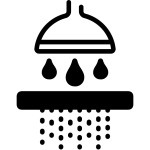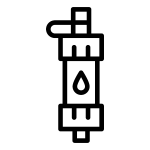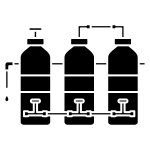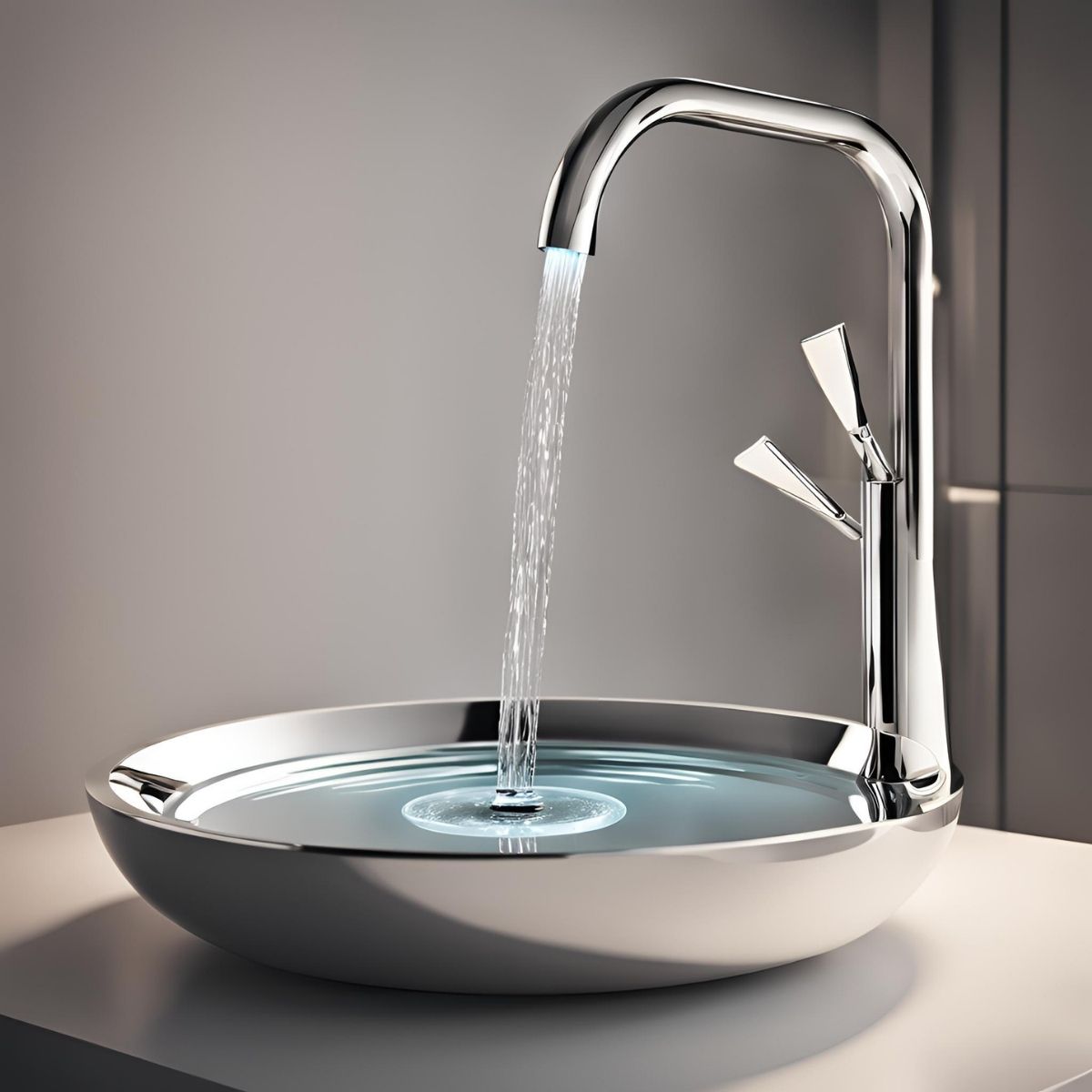Calcium buildup inside faucets is one of the most frustrating and common household plumbing issues. You may notice a reduced water flow, white crusty deposits around the faucet spout, or even clogged aerators—and all these signs point to calcium buildup caused by hard water.
If you’re tired of poor water pressure, flaky faucet heads, and crusty sink fixtures, this guide will teach you how to remove calcium buildup inside your faucet effectively, using both DIY and long-term solutions. And if you’re ready to prevent the issue once and for all, Cuoll’s premium water filters and purifiers are your go-to solution.
Let’s explore everything you need to know to tackle calcium buildup inside faucets like a pro.
Table of Contents
- What Causes Calcium Buildup Inside Faucets?
- Signs You Have Calcium Deposits in Your Faucet
- Why You Must Remove Calcium Buildup ASAP
- Tools and Supplies You’ll Need
- How to Remove Calcium Buildup Inside Faucet – Step-by-Step Guide
- DIY Natural Methods vs. Store-Bought Cleaners
- How to Clean a Faucet Aerator Blocked by Calcium
- How to Prevent Future Calcium Buildup
- Best Water Filters and Solutions from Cuoll
- Frequently Asked Questions (FAQ)
- Final Thoughts
1. What Causes Calcium Buildup Inside Faucets?
Calcium buildup—also known as limescale—occurs when hard water flows through your plumbing. Hard water contains high levels of dissolved minerals, particularly calcium and magnesium. Over time, these minerals leave behind solid deposits that harden inside your faucet and around fixtures.
If your home has no water softener or filter, the problem can worsen quickly.
At Cuoll, we provide water filtration systems that remove these minerals before they reach your faucets, helping you maintain a cleaner, longer-lasting plumbing system.
2. Signs You Have Calcium Deposits in Your Faucet
Not sure whether your faucet is affected? Here are some common signs:
- Low water pressure
- White, chalky residue on and around the faucet spout
- Water spraying unevenly
- Clogged faucet aerators
- Difficulty rotating handles or turning off the water completely
- Rust-like stains forming near the base
These symptoms indicate it’s time to learn how to remove calcium buildup inside faucet to avoid further damage.
3. Why You Must Remove Calcium Buildup ASAP
Ignoring calcium buildup can cause:
- Permanent faucet damage
- Decreased water efficiency
- Poor water hygiene
- Higher water bills due to slow flow
- Costly faucet or plumbing replacement
By cleaning your faucet regularly and installing a Cuoll water filter, you can prevent long-term damage and improve overall water quality.
4. Tools and Supplies You’ll Need
Before we get started with the actual cleaning, gather these supplies:
✔ Basic Supplies:
- White vinegar (or lemon juice)
- Baking soda
- Old toothbrush
- Small bowl
- Clean rag or microfiber cloth
- Ziplock bag or plastic bag
- Rubber band
- Adjustable wrench (optional)
✔ For Tougher Deposits:
- Commercial calcium/lime/rust (CLR) remover
- Small wire brush
- Faucet cleaning tool kit
- Gloves and goggles for safety
5. How to Remove Calcium Buildup Inside Faucet – Step-by-Step Guide
Now let’s look at the exact steps to remove that stubborn calcium buildup:
✅ Step 1: Turn Off the Water Supply
Safety first. Turn off the faucet and if needed, shut off the water supply under the sink to avoid leaks or accidents during cleaning.
✅ Step 2: Soak the Faucet in Vinegar
- Fill a ziplock bag with white vinegar.
- Place it over the faucet spout and secure it with a rubber band.
- Let it soak for 1–2 hours. This loosens the calcium deposits.
Alternative: Use lemon juice if vinegar isn’t available—it works similarly.
✅ Step 3: Scrub the Buildup with a Toothbrush
Remove the bag and scrub the loosened deposits using a toothbrush or soft brush.
- Use circular motions for best results.
- Focus on the tip of the faucet, crevices, and base.
✅ Step 4: Clean the Faucet Aerator
The aerator (the screen at the tip of your faucet) traps a lot of mineral buildup.
- Unscrew the aerator using your hands or a wrench.
- Soak it in vinegar for 15–30 minutes.
- Scrub with a toothbrush and rinse with water.
- Reinstall it securely.
This often restores full water flow instantly.
✅ Step 5: Use Baking Soda Paste for Stubborn Spots
If any calcium stains remain:
- Mix baking soda with vinegar to create a paste.
- Apply to the affected area.
- Let it sit for 10–15 minutes.
- Scrub and rinse with warm water.
✅ Step 6: Rinse and Polish
After cleaning:
- Rinse the faucet with warm water.
- Wipe it dry with a clean microfiber cloth.
- Polish with a dry towel for a shiny finish.
6. DIY Natural Methods vs. Store-Bought Cleaners
Both options can work well depending on the severity of buildup.
🧪 Natural Cleaners (Vinegar & Baking Soda)
- Eco-friendly
- Budget-friendly
- Great for light to moderate buildup
🧪 Store-Bought Cleaners (e.g., CLR, Lime-A-Way)
- More powerful for heavy buildup
- May contain chemicals—use gloves and ventilation
- Avoid prolonged use on delicate finishes (like chrome or brass)
Cuoll recommends starting with natural methods and moving to chemical cleaners only when necessary.
7. How to Clean a Faucet Aerator Blocked by Calcium
Blocked aerators are a major cause of reduced water flow.
To clean:
- Unscrew the aerator.
- Soak in white vinegar for 30–60 minutes.
- Use a pin or needle to poke through any clogged holes.
- Rinse thoroughly and reattach.
Regular aerator cleaning once a month can keep your faucet running smoothly.
8. How to Prevent Future Calcium Buildup
🛑 Prevention is always easier than cleaning. Here’s how to avoid calcium problems long-term:
✅ Install a Water Filter or Softener
Hard water is the root cause. A Cuoll water filtration system removes calcium and magnesium, preventing buildup before it starts.
✅ Wipe Faucets After Each Use
This simple habit helps reduce mineral deposits.
✅ Regular Cleaning
Soak and scrub your faucet with vinegar every 1–2 months to stay ahead of buildup.
✅ Use Filtered or RO Water
This significantly reduces the mineral content and protects all plumbing fixtures.
9. Best Water Filters and Solutions from Cuoll
At Cuoll, we provide top-quality products to protect your plumbing and improve your water quality.
🔹 Cuoll Premium Faucet Water Filter
- Installs easily on most kitchen faucets
- Reduces calcium, chlorine, and bacteria
- Long-lasting cartridge
🔹 Cuoll Whole House Water Filter System
- Filters water for every tap
- Prevents scale in faucets, showers, and appliances
- Ideal for homes with very hard water
🔹 Cuoll RO (Reverse Osmosis) Water Purifier
- Removes 99% of contaminants
- Perfect for drinking and cooking
- Compact and efficient
Shop online now at Cuoll.com and enjoy delivery all across Bangladesh.
10. Frequently Asked Questions (FAQ)
❓ How often should I clean calcium buildup?
Ideally once every 1–2 months, or whenever you notice white residue forming.
❓ Is hard water harmful to health?
Hard water isn’t dangerous to drink but can dry out skin and damage plumbing over time.
❓ Can I use vinegar on all faucet finishes?
Avoid using vinegar on gold, bronze, or antique finishes. Test on a small area first.
❓ Can water filters completely stop calcium buildup?
Yes, filters reduce or eliminate the minerals responsible for calcium deposits, especially when installed at entry points.
❓ How do I know if I have hard water?
Signs include:
- White spots on dishes
- Dry skin after showering
- Soap not lathering well
- Buildup around faucets and appliances
You can also buy a water hardness test kit online.
11. Final Thoughts
Calcium buildup inside your faucet doesn’t just look bad—it can reduce water pressure, damage fixtures, and cost you money in the long run. Fortunately, with the right tools, cleaning methods, and regular maintenance, you can easily take control of the situation.
Now that you know exactly how to remove calcium buildup inside faucet, it’s time to act.
🛒 Shop Cuoll’s water filters, purifiers, and faucet accessories today:
- ✅ Protect your home from hard water damage
- ✅ Improve water flow and faucet lifespan
- ✅ Enjoy safe, clean water for your entire family
Say goodbye to crusty faucets. Say hello to clean water—with Cuoll.








